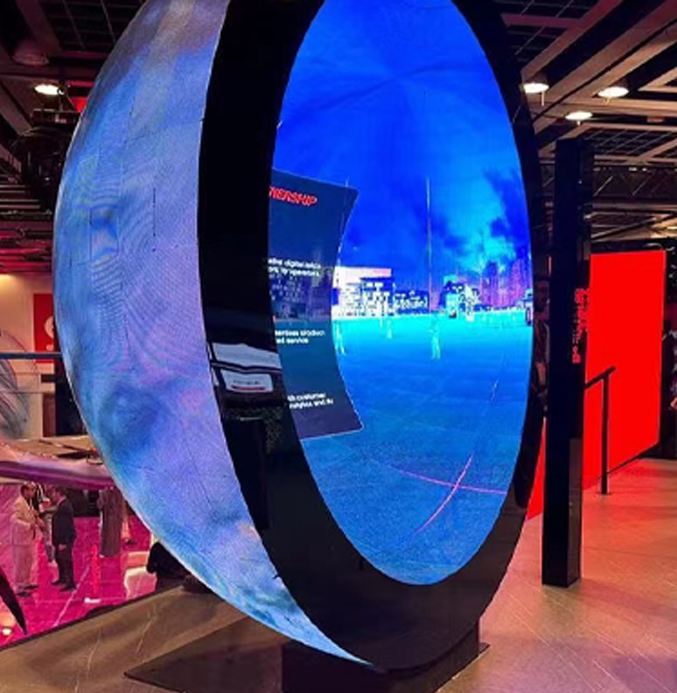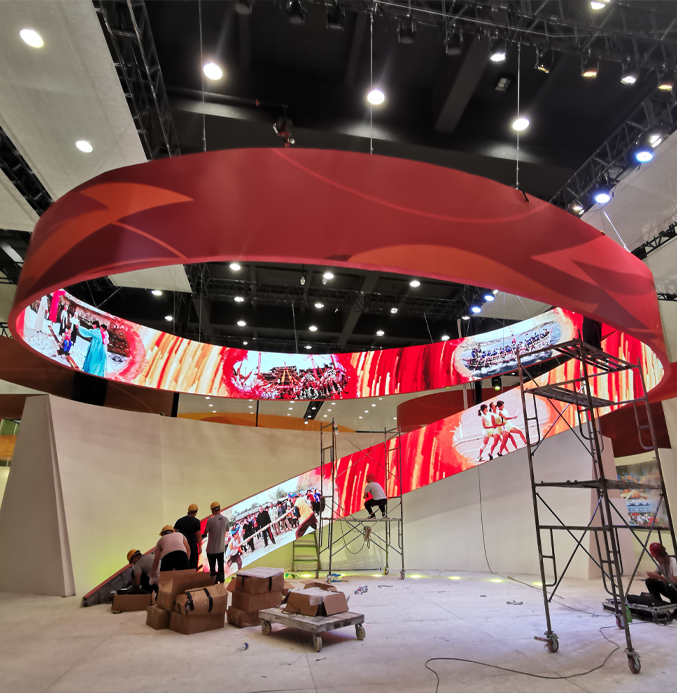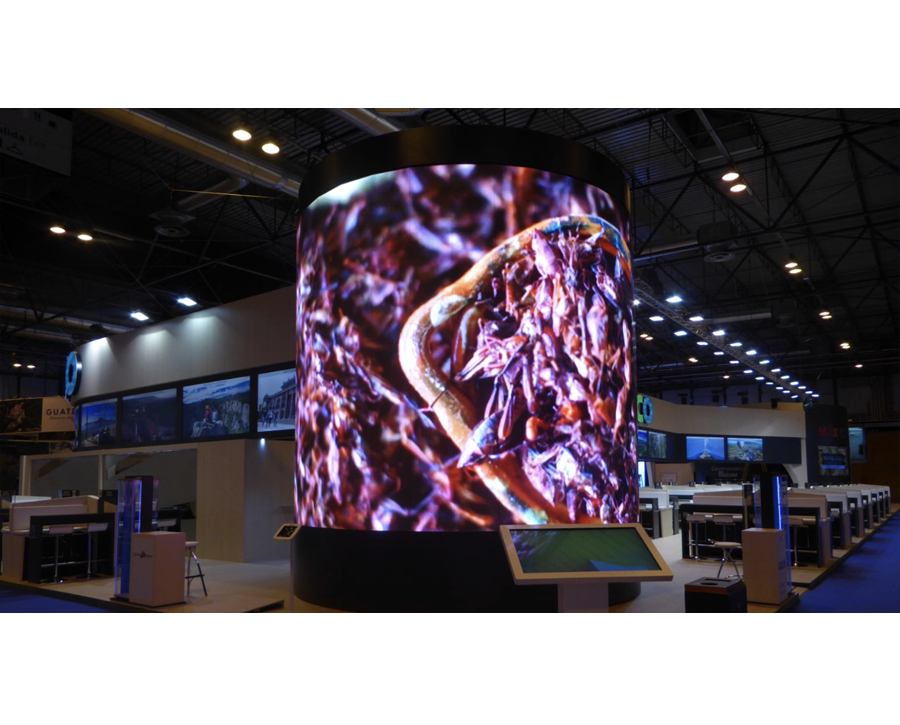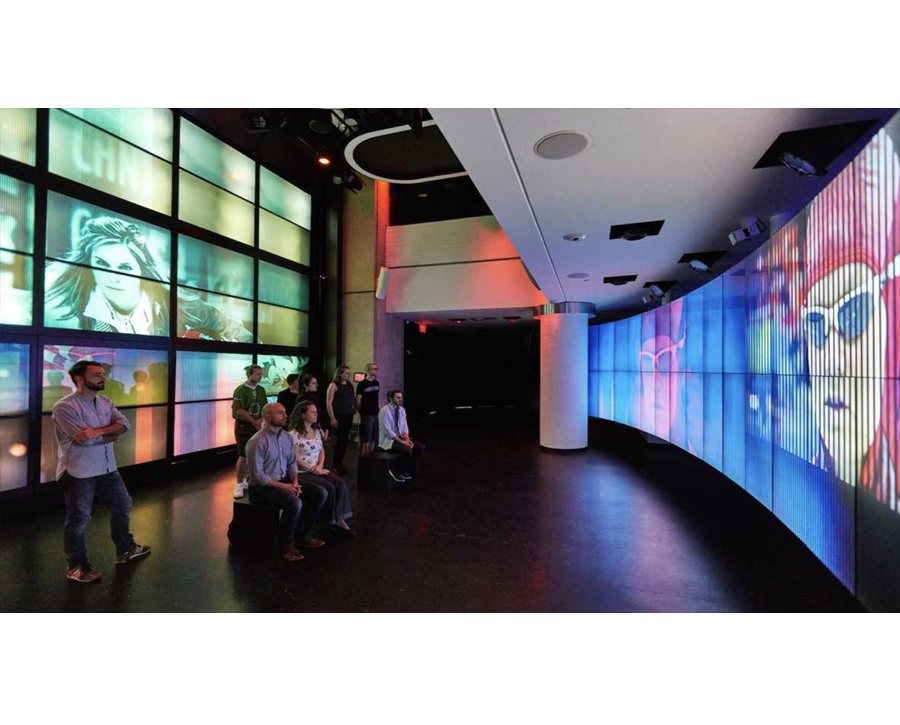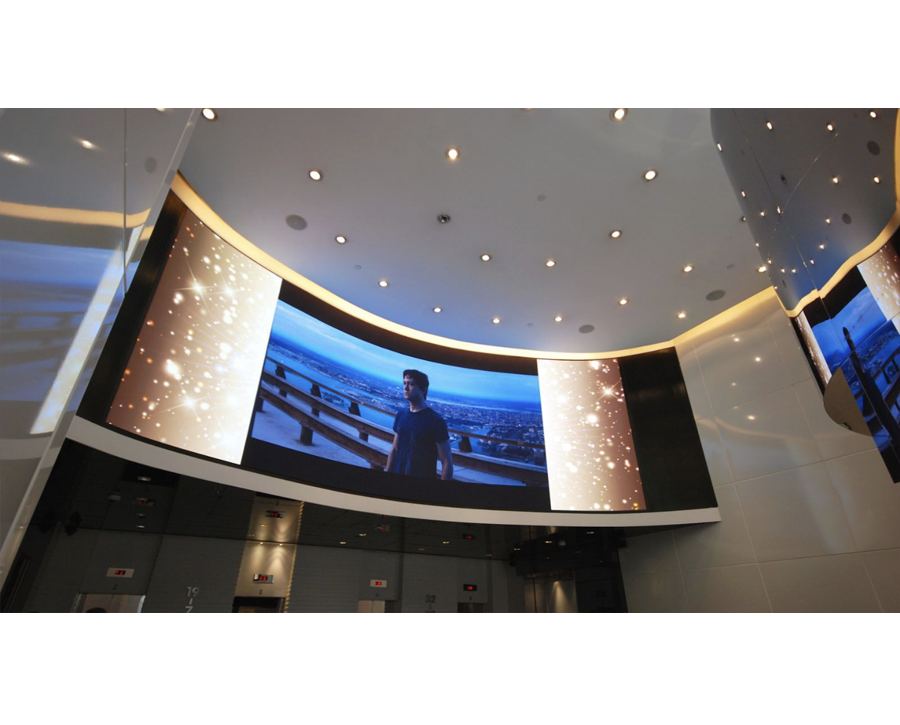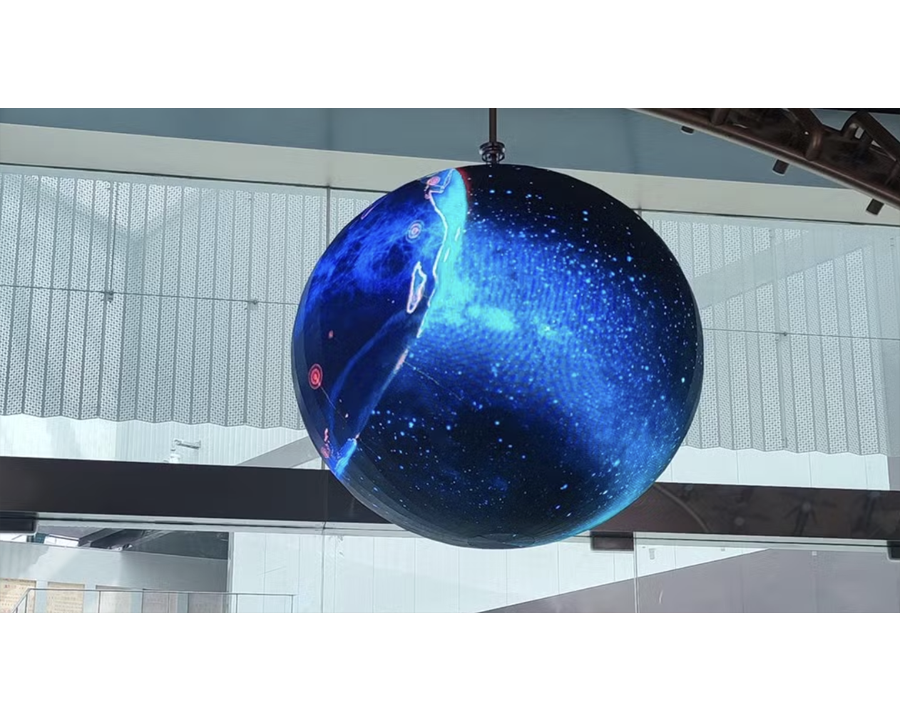
LED sphere display devices are visual powerhouses gaining traction across industries. NASA uses them for planetary simulations, while global brands leverage them for immersive advertising. Sphere LED screen displays, offering seamless 360-degree visuals, blend cutting-edge hardware and sophisticated software. However, designing them is far from simple.
What are spherical displays?
Spherical LED display screens are advanced visual presentation systems that take the form of a sphere, offering a 360-degree view of digital content. Unlike traditional flat displays, their curvature creates a dynamic and immersive experience, making them visually striking.
They utilize technologies like LED panels or projection mapping to achieve high brightness, contrast, and customizable resolutions. Spherical screen displays are increasingly used in industries such as retail, entertainment, education, and urban development.
Applications range from showcasing celestial simulations in planetariums to displaying promotional content in shopping malls and brand showrooms. For example, the massive Vegas Sphere integrates a LED sphere display to provide unparalleLED entertainment experiences.
Smaller spherical display models, often seen in museums or corporate offices, present geographical data or branded visuals, enhancing audience engagement. Sphere display screens support flexible installation methods, including floor standing, ceiling suspension, and wall mounting, adapting to various spatial needs.
Pixel pitches range from 2mm for indoor applications to 10mm for outdoor durability. These versatile systems can display synchronized live feeds or asynchronous preloaded content, making them suitable for real-time updates and events
Hardware challenges in spherical display design
Developing spherical screen ball displays presents unique hardware challenges. One significant difficulty is constructing curved LED panels that maintain consistent brightness and resolution across the sphere. Unlike flat screens, curved panels require precision engineering to prevent visual distortions, particularly at the poles where pixel alignment can be tricky.
Another challenge is ensuring structural integrity. Spherical monitor displays often need custom frame designs to support their weight without compromising visual aesthetics. The display’s curvature demands a durable and lightweight structure, particularly for large-scale applications like the Vegas Sphere, which spans several stories.
Uniform brightness and resolution are critical, requiring advanced calibration techniques. Despite the viewing angle variability inherent in spherical designs, high contrast must be achieved. For instance, “watermelon ball screens,” an early type of LED ball display, often suffered from image distortion at the poles. Modern designs like “triangle ball screens” have mitigated this issue.
Finally, achieving seamless visuals requires advanced modular systems. Panels must connect without visible gaps, often necessitating trapezoidal or other custom shapes. These LED ball screen also rely on enhanced cooling systems and waterproofing, especially for outdoor models, to ensure longevity and reliability in diverse environments.
Software challenges in spherical display design
Developing software for LED screen ball displays involves unique complexities, particularly in adapting 2D content to a curved surface. Traditional flat displays use standard mapping techniques, but spherical displays require specialized software to distort and scale content appropriately. The goal is to ensure that visuals appear seamless and proportional, regardless of the viewing angle.
One of the primary hurdles is distortion management. Mapping a rectangular image onto a sphere introduces distortions, especially at the poles where the curvature is most pronounced. Developers often employ algorithms like equirectangular projection to counteract this issue, but these methods demand high processing power and precise calibration.
For instance, real-time content such as live video feeds for spherical touch screen displays requires advanced rendering engines capable of maintaining fluid visuals without lag. Scaling issues also complicate the design. Content designed for flat screens often doesn’t translate well to spherical surfaces, necessitating custom layouts.
Software must accommodate varying resolutions across different sections of the lcd sphere, ensuring consistent pixel density. This challenge becomes particularly pronounced in large-scale spherical displays, where mismatched resolutions can disrupt the visual experience.
Real-time image processing is another critical aspect. Many spherical lcd display screen are used in applications requiring immediate updates, such as live events or interactive exhibits. Software must process data instantaneously, often integrating with external sensors or devices to provide responsive visuals. Achieving this demands robust hardware compatibility and optimized algorithms
Manufacturing constraints
The manufacturing of spherical displays faces significant challenges, starting with high production costs. Unlike standard flat screens, spherical displays require custom components, including curved LED panels and precision-engineered frames. Producing these elements in limited quantities raises costs significantly, making these displays a premium product
availability also poses hurdles. Curved LED panels require specialized materials that are not widely produced, driving up procurement expenses. Additionally, manufacturing processes like die-cutting and panel shaping must meet exacting tolerances, adding complexity to production
Every component, from the frame to the wiring, must align perfectly to avoid gaps or misalignments. This is particularly critical in large-scale displays, where even minor errors can result in visible imperfections. Moreover, these displays must integrate advanced cooling systems to prevent overheating, especially in outdoor environments.
These collectively make spherical display manufacturing a demanding endeavour, requiring expertise in design, material science, and production engineering.
Integration and installation challenges
Integrating LED sphere screen displays into various environments presents unique hurdles that extend beyond design and manufacturing. These challenges involve ensuring compatibility with supporting systems, optimizing installation processes, and maintaining functionality over time.
First, compatibility with existing systems can be problematic. Many ball LED screen displays are part of larger setups involving audio-visual systems, control software, and network infrastructure. Synchronizing these components requires meticulous planning and expertise.
For example, museums incorporating spherical displays for educational exhibits often need customized software to sync with existing interactive systems. This synchronization can involve integrating motion sensors, touch inputs, or external content sources.
Installation complexity is another significant factor. Spherical displays require specialized mounting solutions due to their unconventional shape and weight distribution. For instance, large-scale spheres, like those used in planetariums or public installations, often weigh several tons. Securely installing these LED dome screen displays necessitates precise calculations and robust structural support to prevent potential safety risks.
Spherical display price and maintenance adds another layer of difficulty. Accessing internal components for repairs or upgrades is far more complex than with traditional flat screens. In outdoor installations, weatherproofing the display while maintaining accessibility compounds these challenges. Regular maintenance must also address potential pixel failures or calibration drifts, both of which can significantly affect display quality.
Use case-specific design issues
The functionality of spherical displays often depends on their intended application, which introduces a variety of design challenges.
- Interactive displays: LED dome screen displays are popular in educational settings or interactive museums, where users engage with content in real-time. Designing for such use cases involves creating intuitive interfaces that function seamlessly on a curved surface. Ensuring responsive touch or motion-based interaction requires precise calibration.
- Large-scale advertising: In commercial spaces, spherical displays serve as eye-catching tools for branding. These displays must be visually striking from all angles, which demands high brightness levels, uniform color representation, and minimal distortion. A sphere display stand featuring a flexible LED screen is perfect for creating captivating 360-degree visuals in retail stores or event spaces.
- Educational models: Sphere projection screen displays used for scientific visualization, like globe projections or astrophysical models, require exact replication of data. For instance, representing Earth’s curvature or celestial phenomena demands precise scaling and distortion control, leaving no room for inaccuracies.
Conclusion
The journey to perfecting spherical display technology involves intricate design, manufacturing, and implementation challenges. These technical limitations force tech companies to innovate creating better ways for us to engage with digital media in 2025 and beyond.
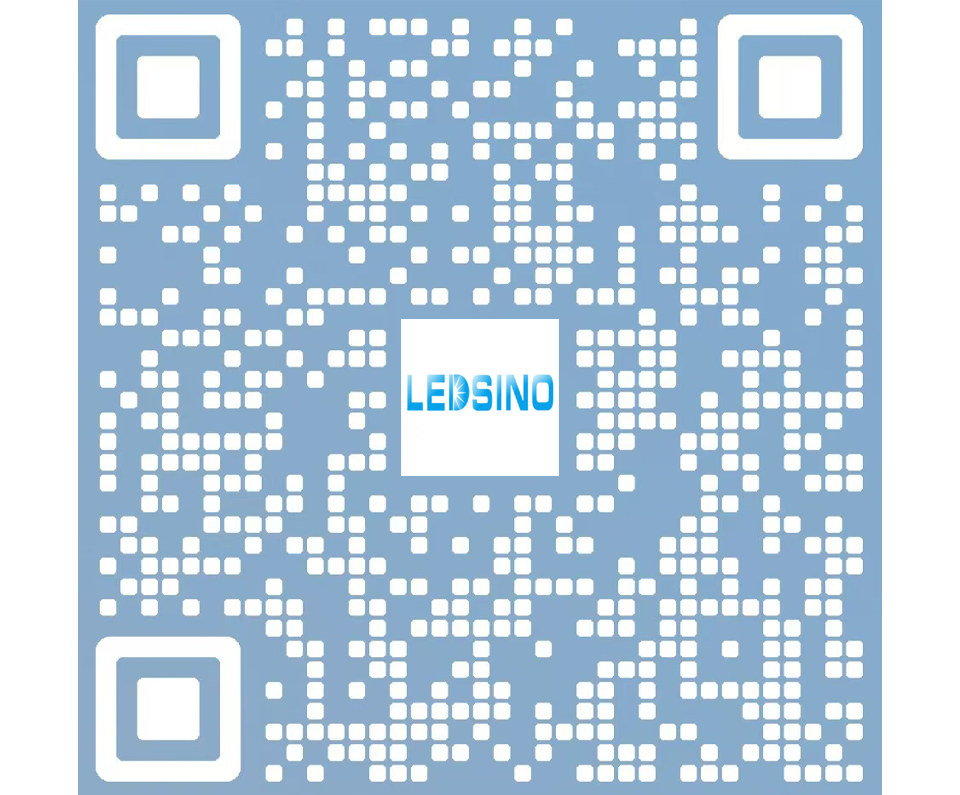
Enter the digital world with our advanced display technologies.

